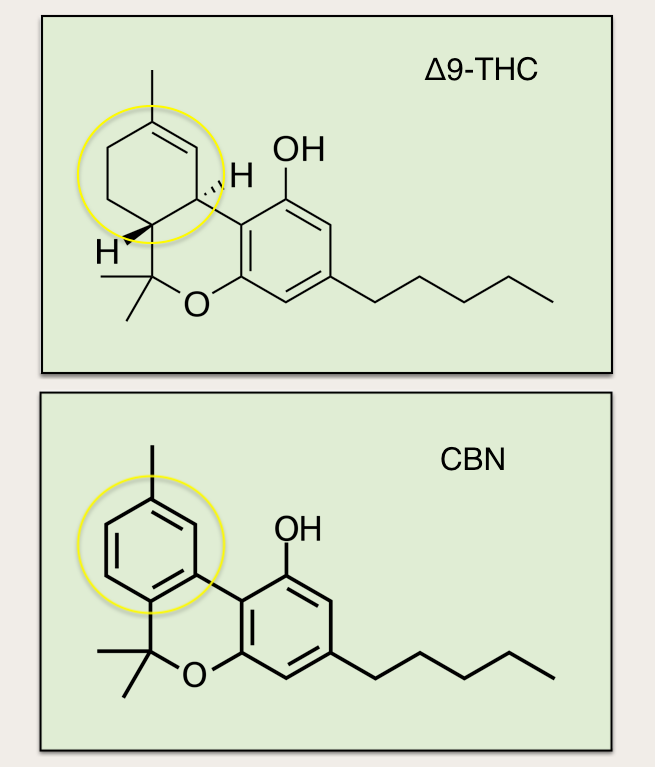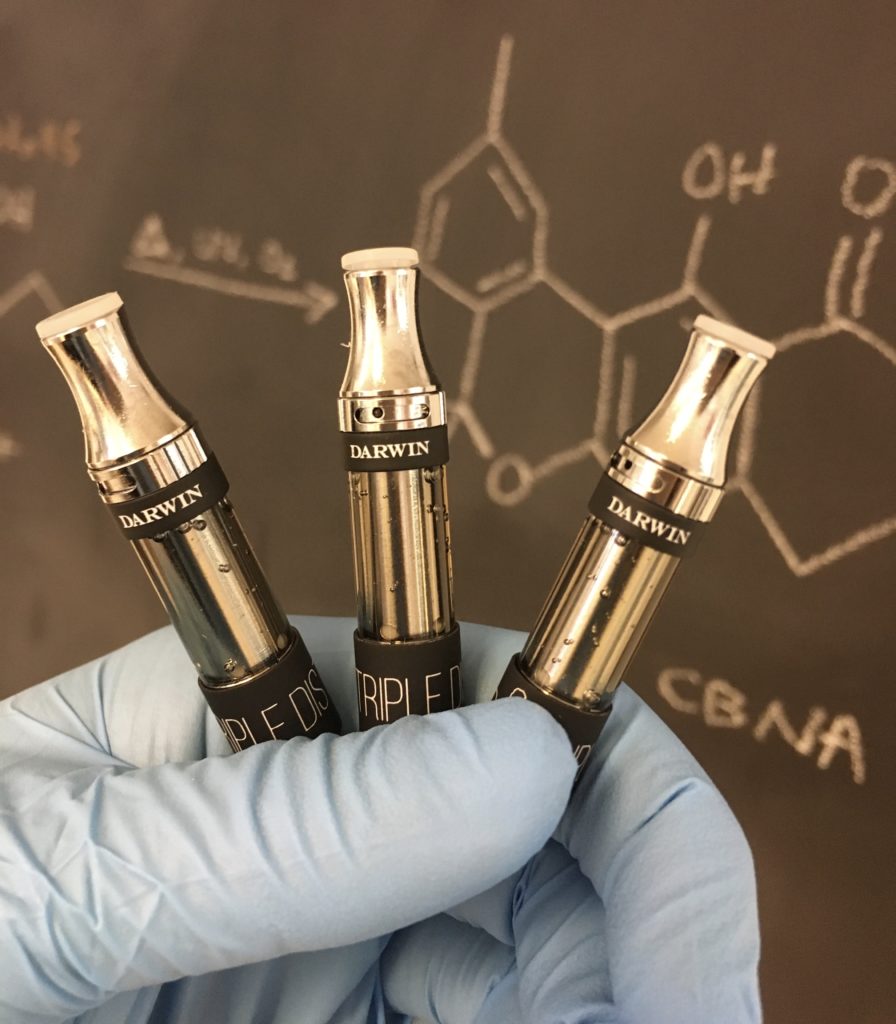How about a bit of trivia: Do you know the first phytocannabinoid structure that was identified and isolated? If you guessed it was THC because of its iconic and superior identity with cannabis, think again. It was actually cannabinol (CBN), discovered in the year 1899 and structurally mapped by chemist Robert Cahn in the 1930’s. Soon after, it was synthesized in a laboratory by Nobel Laureate and organic chemist Lord Alan Todd.
Only a few years later, THC and CBD were isolated and quickly swept CBN in cultural popularity, political manipulation and therapeutic understanding. But, don’t necessarily underestimate the OG. CBN has it’s own psychosomatic uses and has proven to be a very interesting molecule, though we still aren’t quite sure of its conclusive purpose. Questions remain, including its most widely accepted impetus:
Is CBN a sedative?
A Little Botany
CBN is known as a product of cannabis degradation; it forms slowly when the adult plant is harvested and left vulnerable to the a typical ambient environment. When THC is exposed to UVA/B light, oxygen and heat, it undergoes an oxidation reaction and loses four hydrogen atoms, creating CBN. This change in molecular structure also changes the way CBN binds to endocannabinoid receptors and therefore altering how it elicits its effects within the human body.

But CBN is not just a product of THC or THCV degradation (yes, there exists CBNV, or cannabinovarin). It is also formed normally throughout the plant growth cycle just like other phytocannabinoid acids such as CBDA and THCA. Cannabinolic acid (CBNA) is present predominantly in chemovars that are reported to cause sleepiness or sedation. For consumers or patients, don’t mistake this for an Indica-only association. An example? Purple Sour Diesel, a sativa-dominant strain and cross of Sour Diesel, Purple Kush and SR-71, is known for it’s dose-related energizing effects and high-concentration of THC, but it is also causes a notable sleepiness due to the fact it contains CBN. Or, so we believe.
What We Think We Know:
CBN has historically been classified as a mildly intoxicating phytocannabinoid, significantly less than that of THC and its analogues, and less than THCV in higher doses. In contrast, many researchers consider CBN to be non-intoxicating on its own, a consideration that is hot for debate. CBN is a weak CB1 and CB2 agonist, and when metabolized into 11-OH-CBN through first pass liver metabolism, its affinity or agonism for CB1 receptors in the central nervous system increases slightly. Many believe the effects are generally mild.
It is widely known for its valuable claim as a sedative, and has even been reported to be a 2:1 mg equivalent to diazepam (Valium), a drug commonly prescribed for anxiety (discussed later). When used in a synergistic fashion with THC, CBN has been stated to increase mental and somatic sedation, as well as increase overall intoxicating effects. It’s also been reported to help alleviate pain and inflammation. But how much of the current medical literature supports its therapeutic value? Does CBN actually do what we all believe?
When administered as an isolated molecule, the majority of the scientific body of literature does not conclusively support claims that CBN is a sedative responsible for the sleepy feeling that consumer experience. Surprised? One specific and commonly cited study published in 1975 does conclude that orally-administered CBN enhances feelings of drowsiness, drunkenness, dizziness and a “drugged” feeling, but only when combined with THC. In addition, the study only recruited five subjects, making the statistical analysis very underpowered and likely significant by chance.
What about the circulating claim relating CBN to diazepam? This relationship was actually reported by Steep Hill Labs and quickly went viral as a claim by many to cure sleeplessness. But no clinical data exists to support this, and the page stating Steep Hill’s conclusions has been recently removed. There is actually more evidence comparing the use of THC and diazepam in relation to their comparative effects on drowsiness and anxiety. Further, more data supports a dose-response relationship between THC and sleepiness when compared to CBN alone. With regard to CBN, the support favors more of an entourage effect, where its potential is seen as a synergistic relationship with other cannabis constituents than of one in isolation.

A not-so-positive fact for the males out there: The NEJM published a study in 1974 concluding that marijuana use may decrease plasma testosterone levels (say what?) Though the mechanism was thought to be linked to hypothalamic and pituitary gonadotropin hormone production, it led to further investigation. In 1978, an in vitro animal model study published in the journal Pharmacology Biochemistry and Behavior concluded that both THC and CBN may decrease testosterone secretion by the testes. Further, different mechanisms may exist between THC and CBN’s negative effect on testosterone production, with THC’s effects being more pronounced and having a negative impact on sexual activity. Another study in 1979, one in 1980, another in 2015, concluded similarly regarding CBN’s effects on testosterone suppression. Yikes!
Based on the current body of literature, what are the forward-looking statements?
Cannabinol has been positively supported to be an important pain-relieving cannabinoid, as well as an anti-inflammatory. There is also limited evidence supporting CBN’s ability to stimulate appetite. Several studies have also considered the potential antioxidant role of CBN in delaying symptom onset associated with amyotrophic lateral sclerosis (ALS), a motor neuron disorder, as well as its help with motor relaxation.
For patients and other consumers looking for a relaxing or sedating effect, it is recommended they find a product that contains a mix of THC, CBN and other natural aromatic compounds that elicit sleepiness, such as linalool (found most notably in lavender, though it’s prevalent in many cannabis strains).
As the ability to conduct cannabis-focused research expands, the scientific community will be able to deliver more concrete, evidence-based directives on CBN and the therapeutic value it holds.
Pingback: How CBN is the Secret to Superior-Quality Sleep - Fiori Cannabis Delivery